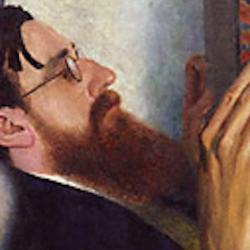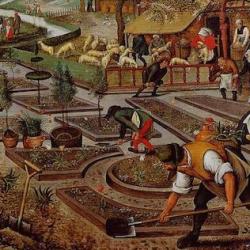“Classic theories of modernization, from the 1950s,” write the editors of Reflections on Multiple Modernities, “identified the core of modernity, of modern social structure, as the decomposition of older ‘closed’ formations and . . . of the growing potential for social mobilization, and the concomitant development of new structural, institutional, and cultural features. The most important structural dimension of modernity attesting to the decomposition of relatively narrow formations was the growing tendency to structural differentiation, most apparent in the growth of urbanization and a market economy and in the continual development of distinctive channels of communication and agencies of education. On the institutional level such decomposition gave rise to the development of new forms — such as the modern state, modern national collectivities, new and capitalist-political economies — which were perceived or defined at least to some extent as being autonomous and were indeed regulated by distinct mechanisms. Concomitantly, modernity was seen as comprising a distinct cultural program, and as shaping distinct types of individual personalities” (3).
Despite differences, these classic accounts of modernization shared the assumption that the structural changes of modernity were interwoven with the cultural changes. And that implied that structural changes of a “modernizing” sort in any civilization would produce modernizing cultural changes similar to those of European modernity. These theories “assumed that the basic institutional constellations, the definitions of the institutional arenas and the modes of their regulation and integration that developed in European modernity, as well as the cultural program of modernity as it developed in the West would ‘naturally’ be absorbed by all modernizing societies, possibly with local variations” and “that this project of modernity, with its hegemonic and homogenizing tendencies, would not only continue in the West, but also prevail throughout the world” (4).
It hasn’t turned out that way. Even societies with modernized economic systems differ in their political life, education, family and other areas of social life. Thus, “although modernity has spread to most of the world, it has not given rise to a single institutional pattern or a single modern civilization. It has, however, influenced the development of several modern civilizations, or at least civilizational patterns, i.e., of societies or civilizations that share some core characteristics, but have developed different ideological and institutional dynamics” (4). Hence the notion of “multiple modernities.”
Add to this the fact that modernity didn’t live up to its hype. Students of modernization have always exhibited some ambivalence, treating modernization as both liberating and corrosive, emancipating even as it dissolved all into thin air. Progress, it turned out, was not inevitable. Some tried to pass off “wars, genocide, and repression . . . as being against the basic grain of the program of modernity, mere remainders of premodern attitudes.” But it had become clear that the very processes of modernization contributed to, even when they didn’t cause, violence: “forms of violence and control were radically transformed and intensified by being interwoven both with the ideological premises of modernity, and with the specific patterns of institutionalization in modern societies and regimes, generating specifically modern barbarism,” especially evident in “the tendency to make violence, terror, and war a matter of ideology” (6).
The editors don’t give up the idea of modernization, nor the idea that there is a core reality within the variety. For SN Eisenstadt, one of the editors, that core is “the deconstruction of a God-ordained worldview held by all axial age civilizations. Since modern societies are no longer embedded in meaningful transcendental orders, they are in principle open to continuous transformation and adaptation. Thus . . . modernity is characterized by features such as open political arenas and changing collective identities that are subject to continuous competition between the center and the periphery; the autonomy of man in relation to any form of authority; and the multiplicity of often competing visions of the public good. Its structural openness and continual contestation make any form of modernity thus a dynamic system of development and reformation” (10).
In contrast to some classic theories, however, he argues that “modernity does not dissolve traditions, but rather that they serve as resources for modernity’s perpetual constitution and reconstitution.” As a result, “various cultures, when they are undergoing modernization, develop distinctive reaction patterns, conceptions of the good, and institutions. Whereas the first form of modernity emerged in Europe, the North and Latin American experiences are not fragments of the Old World, but rather the crystallization of a new civilization” (10).
Modernity is more complicated than it used to be. But it is probably still too simple, still too easily marking itself in distinction from “premodern” and treating anything that doesn’t fit an ideal type of modernity as a “persistence” of prior tradition. The advocates of “multiple modernities” approach but don’t reach the insight of Bruno Latour, that “we have never been modern.”











